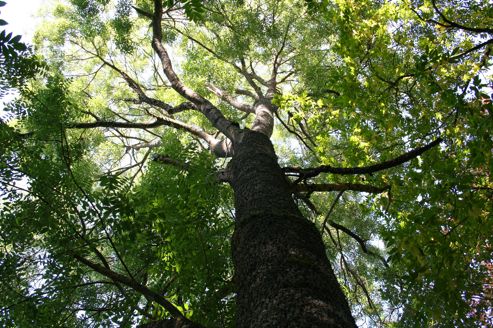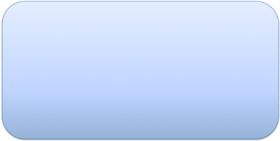Maladies du frêne : Différence entre versions
De Wicri Bois
imported>Thierry Daunois |
imported>Thierry Daunois |
||
| Ligne 97 : | Ligne 97 : | ||
==Notes et références== | ==Notes et références== | ||
| − | + | *T. Kowalski, Chalara fraxinea sp. nov. associated with dieback of ash (Fraxinus excelsior) in Poland Forest Pathology Volume 36, Issue 4, Pages264 - 270 2006 Blackwell Verlag, Berlin | |
| − | + | *↑ Kowalski T. and Holdenrieder O. 2009 The teleomorph of Chalara fraxinea, the causal agent of ash dieback. Forest Pathology doi: 10.1111/j.1439-0329.2008.00589.x | |
| − | + | *↑ Halmschlager E, Kirisits T (2008) First report of the ash dieback pathogen Chalara fraxinea on Fraxinus excelsior in Austria. New Disease Reports, Volume 17, February 2008 - July 2008. (Lire [archive]) | |
| − | + | *↑ Actual situation of dieback of ash in Austria by TL Cech and U Hoyer-Tomiczek [archive] (Research and Training Centre for Forests, Natural Hazards and Landscape ; BFW)) | |
| − | + | *↑ Schumacher J, Wulf A, Leonhard S (2007) First record of Chalara fraxinea T. Kowalski sp. nov. in Germany – a new agent of ash decline. Nachrichtenblatt des Deutschen Pflanzenchutzdienstes 59(6), 121-123 (in German). | |
| − | + | *↑ Szabó I (2008) Dieback of common ash (Fraxinus excelsior) caused by Chalara fraxinea. Növényvédelem 44(9), 444-446 (en Hongrois). | |
| − | + | *↑ Ash dieback [archive] (Norwegian Institute of Forestry and landscape. , en norvégien) | |
| − | + | *↑ Kowalski T (2006) Chalara fraxinea sp. nov. associated with dieback of ash (Fraxinus excelsior) in Poland. Forest Pathology 36(4), 264-270. | |
| − | + | *↑ Ash dieback in Denmark [archive] (Forest & Landscape Denmark) | |
| − | + | *↑ Protection des forêts – Vue d’ensemble 2007 [archive] (publié en 2008) | |
| − | + | *↑ Piou D., Caroulle F. [2008]. Émergence d’une nouvelle maladie du frêne. Forêts de France 519 : 29 (1 p., 2 fig.). | |
| − | + | *↑ Fiche Protection des végétaux ; Revue de la Fédération Wallonne Horticole – n° 50 Chalara fraxinea, un nouveau champignon qui attaque le frêne en Europe : appel à signalement [archive] | |
| − | + | *↑ Chandelier A. [2008]. Le frêne, une essence menacée en Europe ? Silva Belgica 115 : 28-31 (4 p., 3 fig., 5 réf.) | |
| − | + | *↑ Page de la liste d'Alerte de l'EPPO [archive] (en) datée 2007_09, revue 2008-02 et Consultée 2009 92 12 22:46 | |
| − | + | *↑ McKinney L.V., Thomsen I.M., Kjaer E.D., Nielsen L.R. [2012]. Genetic résistance to Hymenoscyphus pseudoalbidus limits fungal growth and symptom occurrence in Fraxinus Excelsior. Forest Pathology 42 : 69-74 (6 p., 2 fig., 2 tab., 20 réf.). | |
==Voir aussi== | ==Voir aussi== | ||
;A propos de cet exercice: | ;A propos de cet exercice: | ||
:* sur Wicri/Artist, la page d'accueil [[artist.fr:Master IE 2012 Nancy|Master IE Nancy, projet 2012]] et [[artist.fr:Master IE 2012 Nancy, Maladies du frêne|les remarques méthodologiques]. | :* sur Wicri/Artist, la page d'accueil [[artist.fr:Master IE 2012 Nancy|Master IE Nancy, projet 2012]] et [[artist.fr:Master IE 2012 Nancy, Maladies du frêne|les remarques méthodologiques]. | ||
Version du 15 janvier 2013 à 16:56
 |
Antoine Lambois Mohamed Mourchid Mohamed Diaby Abdoul Aziz Fall
|
Introduction
|
La chalarose est certainement la maladie la plus connue qui touche le frêne (fraxinus). Pourtant, beaucoup d'autres existent. Les maladies des arbres sont provoquées par des agents pathogènes tels que les bactéries, les vers, les insectes comme par exemple le bostryche, les champignons et les virus qui les infestent. Les maladies affaiblissent l’arbre (perte des feuilles, ouvertures dans le système de défense de l’arbre, pourriture de l’écorce) et peuvent même entraîner sa mort. |
Les différentes maladies du frêne
|
Les acteurs universitaires
|
Notes et références
- T. Kowalski, Chalara fraxinea sp. nov. associated with dieback of ash (Fraxinus excelsior) in Poland Forest Pathology Volume 36, Issue 4, Pages264 - 270 2006 Blackwell Verlag, Berlin
- ↑ Kowalski T. and Holdenrieder O. 2009 The teleomorph of Chalara fraxinea, the causal agent of ash dieback. Forest Pathology doi: 10.1111/j.1439-0329.2008.00589.x
- ↑ Halmschlager E, Kirisits T (2008) First report of the ash dieback pathogen Chalara fraxinea on Fraxinus excelsior in Austria. New Disease Reports, Volume 17, February 2008 - July 2008. (Lire [archive])
- ↑ Actual situation of dieback of ash in Austria by TL Cech and U Hoyer-Tomiczek [archive] (Research and Training Centre for Forests, Natural Hazards and Landscape ; BFW))
- ↑ Schumacher J, Wulf A, Leonhard S (2007) First record of Chalara fraxinea T. Kowalski sp. nov. in Germany – a new agent of ash decline. Nachrichtenblatt des Deutschen Pflanzenchutzdienstes 59(6), 121-123 (in German).
- ↑ Szabó I (2008) Dieback of common ash (Fraxinus excelsior) caused by Chalara fraxinea. Növényvédelem 44(9), 444-446 (en Hongrois).
- ↑ Ash dieback [archive] (Norwegian Institute of Forestry and landscape. , en norvégien)
- ↑ Kowalski T (2006) Chalara fraxinea sp. nov. associated with dieback of ash (Fraxinus excelsior) in Poland. Forest Pathology 36(4), 264-270.
- ↑ Ash dieback in Denmark [archive] (Forest & Landscape Denmark)
- ↑ Protection des forêts – Vue d’ensemble 2007 [archive] (publié en 2008)
- ↑ Piou D., Caroulle F. [2008]. Émergence d’une nouvelle maladie du frêne. Forêts de France 519 : 29 (1 p., 2 fig.).
- ↑ Fiche Protection des végétaux ; Revue de la Fédération Wallonne Horticole – n° 50 Chalara fraxinea, un nouveau champignon qui attaque le frêne en Europe : appel à signalement [archive]
- ↑ Chandelier A. [2008]. Le frêne, une essence menacée en Europe ? Silva Belgica 115 : 28-31 (4 p., 3 fig., 5 réf.)
- ↑ Page de la liste d'Alerte de l'EPPO [archive] (en) datée 2007_09, revue 2008-02 et Consultée 2009 92 12 22:46
- ↑ McKinney L.V., Thomsen I.M., Kjaer E.D., Nielsen L.R. [2012]. Genetic résistance to Hymenoscyphus pseudoalbidus limits fungal growth and symptom occurrence in Fraxinus Excelsior. Forest Pathology 42 : 69-74 (6 p., 2 fig., 2 tab., 20 réf.).
Voir aussi
- A propos de cet exercice
-
- sur Wicri/Artist, la page d'accueil Master IE Nancy, projet 2012 et [[artist.fr:Master IE 2012 Nancy, Maladies du frêne|les remarques méthodologiques].

